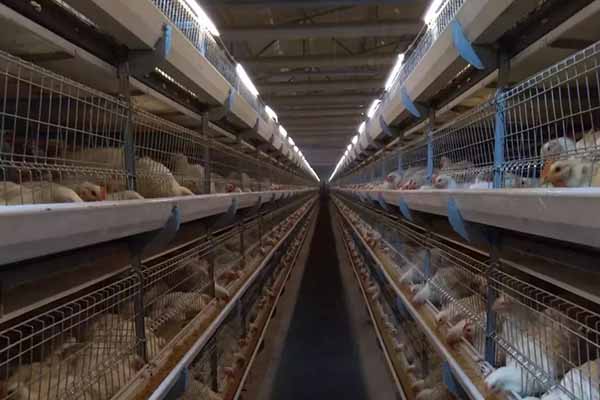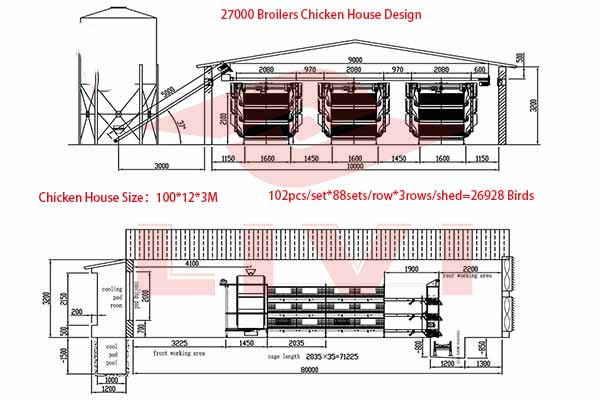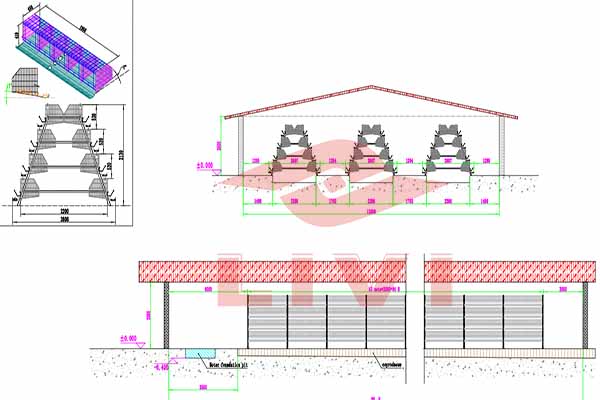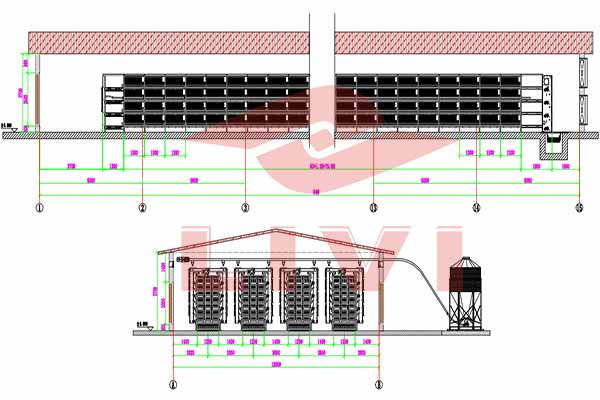Automatic Poultry Cage System for 80,000 Chickens in Nigeria: A Comprehensive Guide
Introduction
In the fast-growing poultry industry in Nigeria, implementing an efficient automatic poultry cage system is crucial for large-scale chicken farming. This article provides an overview of a system designed to accommodate up to 80,000 chickens, focusing on its features, benefits, and potential return on investment.
System Overview
The automatic poultry cage system for 80,000 chickens is designed to optimize space, reduce labor costs, and enhance the overall health of the flock. Here are the key components and features:
- Automated Feeding: A programmable feeding system ensures consistent feed distribution, reducing the risk of malnutrition and improving growth rates.
- Watering System: With automated watering, chickens receive a constant supply of fresh water, vital for their health and productivity.
- Airflow and Ventilation: Proper airflow and ventilation are crucial for maintaining an optimal environment, preventing disease, and keeping chickens comfortable.
- Manure Removal: An automated manure removal system ensures a clean and hygienic environment, reducing the risk of disease and improving flock health.
- Monitoring and Control: Real-time monitoring allows for quick responses to any issues, such as temperature fluctuations or disease outbreaks.
Benefits of the System
Investing in an automatic poultry cage system for 80,000 chickens in Nigeria offers several benefits:
- Increased Productivity: The system is designed to maximize the growth rate and productivity of the flock.
- Cost Savings: Automated systems reduce labor costs and minimize the risk of human error.
- Healthier Chickens: The controlled environment helps maintain chicken health, reducing the need for medication and veterinary visits.
- Scalability: The system can easily be expanded to accommodate more chickens as the farm grows.
ROI Analysis
The return on investment (ROI) for an automatic poultry cage system for 80,000 chickens can be significant. According to industry data, farms that implement such systems see an average ROI of 30-50% within the first three years. Here’s a simplified breakdown:
| Costs | Revenue |
|---|---|
| Initial Setup Cost | Revenue from selling chickens |
| Operational Costs | Revenue from selling eggs and meat |
| Variable Costs | Variable costs include feed, water, and other operational expenses |
Conclusion
Investing in an automatic poultry cage system for 80,000 chickens in Nigeria is a strategic move for any poultry farmer looking to enhance productivity, reduce costs, and ensure the health of their flock. With the right system in place, farms can achieve significant growth and profitability.
For more information and to obtain a free poultry design plan and equipment quotation from LIVI Machinery, please leave a comment below. Our team of experts is ready to assist you in transforming your poultry farm into a successful venture.





